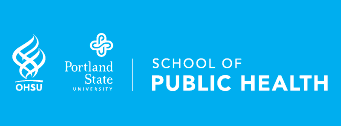Traveling for Abortion Services in Mexico 2016-2019: Community-Level Contexts of Mexico City Public Abortion Clients
Presenter Biography
Laura Jacobson, MPH is a PhD student in the Health Systems and Policy program at OHSU-PSU School of Public Health. Laura is interested in health system accountability and sexual and reproductive health services quality-of-care.
Program/Major
Health Systems and Policy
Student Level
PhD
Presentation Type
Presentation
Start Date
4-8-2021 11:38 AM
End Date
4-8-2021 11:49 AM
Persistent Identifier
https://archives.pdx.edu/ds/psu/35587
Subjects
abortion, health services research
Abstract
Objective: To describe the community context of women who travel to access Mexico City’s public sector abortion program and identify factors associated with traveling from small towns and rural settings. Methods: We used data from the Interrupción Legal de Embarazo (ILE) program (2016-2019) and identified all abortion clients who traveled from outside Mexico City. We merged in contextual information at the municipality level and used descriptive statistics to compare ILE clients’ individual characteristics with municipality averages and characterize municipalities on several measures of vulnerability. We also compared municipalities that sent ILE clients and those that did not. We used logistic regression to identify factors associated with traveling to access ILE services from smaller (fewer than 100,000 inhabitants versus more populated municipalities. Results: Our sample included 21,629 ILE clients who traveled to Mexico City from 491 municipalities and 31 states across Mexico; the majority traveled from the wealthiest (81.9%), and most populated (over 100,000 inhabitants; 91.3%) municipalities. Most (91.2%) ILE clients came from municipalities with adolescent fertility rates in the bottom 3 quintiles. Clients with a high school or university education (versus less) and those from a municipality with a high adolescent fertility rate had higher odds of traveling from a smaller (versus more populous) municipality (OR 1.2; 95% CI 1.02-1.41 and OR 4.7; 95% CI 3.93-5.65, respectively).
Traveling for Abortion Services in Mexico 2016-2019: Community-Level Contexts of Mexico City Public Abortion Clients
Objective: To describe the community context of women who travel to access Mexico City’s public sector abortion program and identify factors associated with traveling from small towns and rural settings. Methods: We used data from the Interrupción Legal de Embarazo (ILE) program (2016-2019) and identified all abortion clients who traveled from outside Mexico City. We merged in contextual information at the municipality level and used descriptive statistics to compare ILE clients’ individual characteristics with municipality averages and characterize municipalities on several measures of vulnerability. We also compared municipalities that sent ILE clients and those that did not. We used logistic regression to identify factors associated with traveling to access ILE services from smaller (fewer than 100,000 inhabitants versus more populated municipalities. Results: Our sample included 21,629 ILE clients who traveled to Mexico City from 491 municipalities and 31 states across Mexico; the majority traveled from the wealthiest (81.9%), and most populated (over 100,000 inhabitants; 91.3%) municipalities. Most (91.2%) ILE clients came from municipalities with adolescent fertility rates in the bottom 3 quintiles. Clients with a high school or university education (versus less) and those from a municipality with a high adolescent fertility rate had higher odds of traveling from a smaller (versus more populous) municipality (OR 1.2; 95% CI 1.02-1.41 and OR 4.7; 95% CI 3.93-5.65, respectively).


